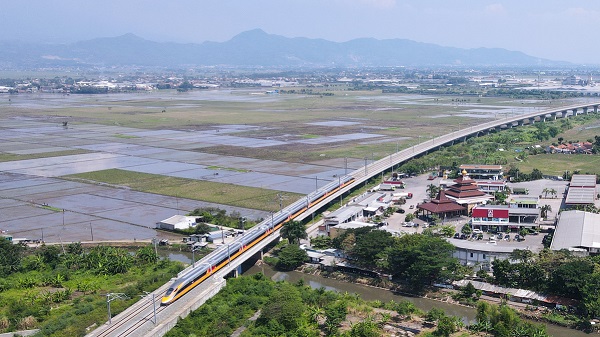High-quality development unfolds on high-speed tracks
时间:2024-03-12 16:30:52 来源 : DiscoverWenzhou 作者 : Zhuang Qiange
Decadeslong efforts for mastery in high-speed railways have made China, a latecomer to modern transport systems, a proud owner of the world's largest HSR network.

According to China State Railway Group Co Ltd, China's railway operator, as of the end of 2023, the total span of China's railway networks in operation exceeded 159,000 kilometers, including 45,000 km of HSR lines.
Involving many centrally administered State-owned enterprises, China's rail development continued to progress last year, with the launch of more lines aimed at fostering socioeconomic development within the country and beyond.
In the Yangtze River Delta region, HSR projects are fueling the rise of the nation's economic heartland, where Shanghai and the provinces of Jiangsu, Zhejiang and Anhui reported a combined GDP of over 30.5 trillion yuan ($4.24 trillion) last year.
The region now boasts a total railway track length of over 14,000 km, including 7,100 km of HSR lines.
The rise in transport demand in the region was sought to be met by new HSR lines like the second Shanghai-Nanjing intercity HSR and local projects including the Jinhua-Jiande and Hangzhou-Wenzhou HSR lines.
Utilizing its mastery in related cutting-edge technologies, China has been building railways complete with long-span bridges and tunnels in challenging geological and climatic conditions. It has expanded HSR lines to remote and ethnic minority areas to foster socioeconomic development.
For example, the massive Beipanjiang River railway arch is not only one of the world's highest railway bridges at 283 meters, but is also among the world's longest concrete arches ever built with a span of 445 meters. The crossing on the HSR line connecting Guiyang and Kunming is deemed a crown jewel of the bridge-building field.
HSR systems are symbolic of China's high-quality development, influencing all aspects of society. Last year, 3.68 billion railway passenger trips were made nationwide, a record, China Railway said.
In addition, the nation's expertise in building HSR systems has gone global. The latest example is the Jakarta-Bandung High-speed Railway in Indonesia, officially launched in October. It is the first overseas HSR project fully utilizing Chinese railway systems, technology and industrial components.
With a design speed of 350 km per hour, the 142.3-km line substantially shortens the journey time between Indonesia's capital Jakarta and tourist city Bandung. Since its launch, it has handled more than 1 million passenger trips.
"High-speed railway construction can boost various industries through the industrial chain, which is significant for China now as it is faced with a tepid domestic demand. With abundant capital flowing into the infrastructure sector, major projects such as HSR lines will continue to see booming development in the first several months of this year," said Long Chaocan, an investment consultant with China Galaxy Securities Co Ltd. (Zhuang Qiange)

5f2a40b5-3abc-487f-ac12-50e75a8d67fb.jpg)
dba0fcf6-c53e-4f5b-b1cf-556dc8c16e15.png)